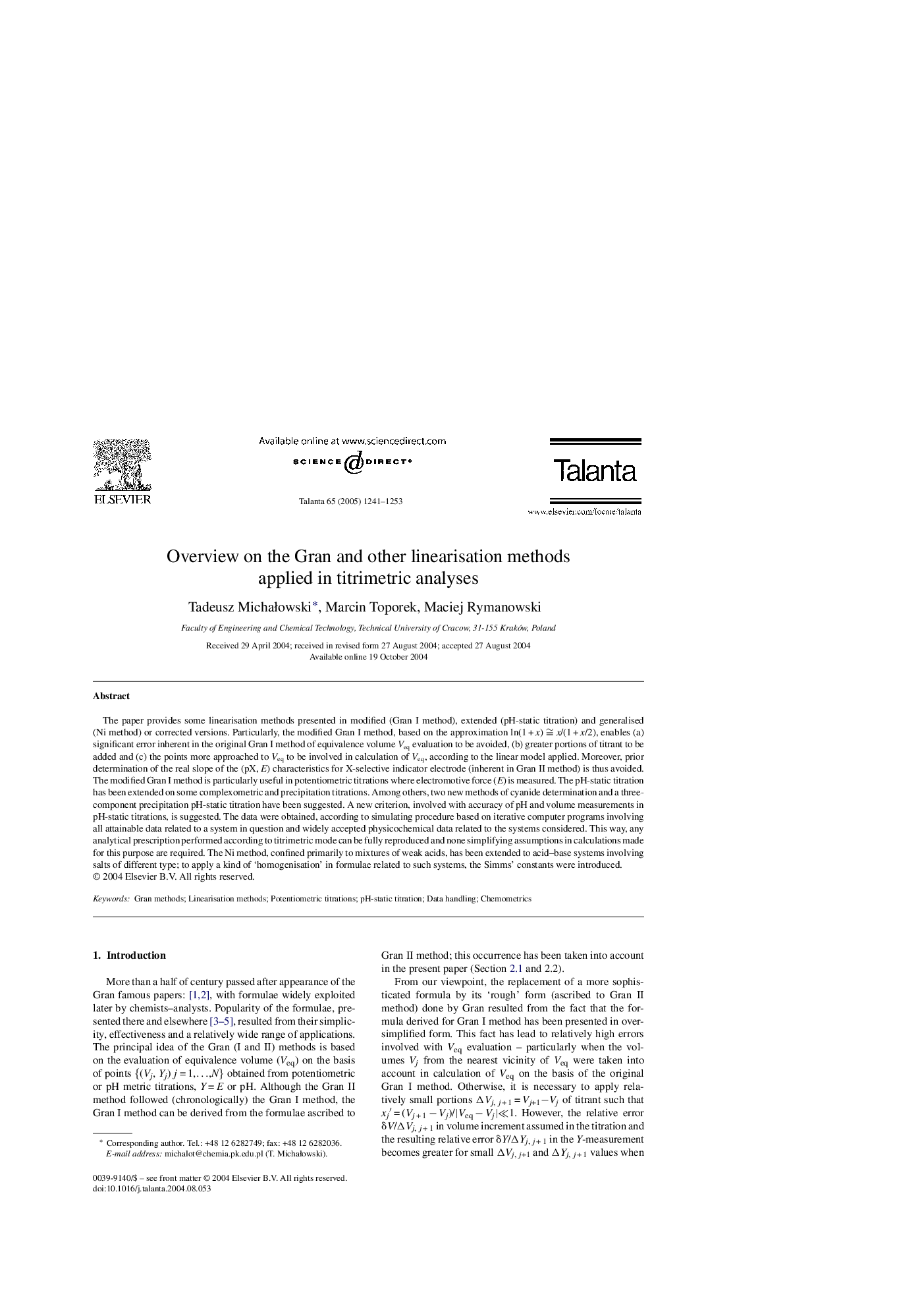| Article ID | Journal | Published Year | Pages | File Type |
|---|---|---|---|---|
| 10560930 | Talanta | 2005 | 13 Pages |
Abstract
The paper provides some linearisation methods presented in modified (Gran I method), extended (pH-static titration) and generalised (Ni method) or corrected versions. Particularly, the modified Gran I method, based on the approximation ln(1Â +Â x) â
x/(1Â +Â x/2), enables (a) significant error inherent in the original Gran I method of equivalence volume Veq evaluation to be avoided, (b) greater portions of titrant to be added and (c) the points more approached to Veq to be involved in calculation of Veq, according to the linear model applied. Moreover, prior determination of the real slope of the (pX, E) characteristics for X-selective indicator electrode (inherent in Gran II method) is thus avoided. The modified Gran I method is particularly useful in potentiometric titrations where electromotive force (E) is measured. The pH-static titration has been extended on some complexometric and precipitation titrations. Among others, two new methods of cyanide determination and a three-component precipitation pH-static titration have been suggested. A new criterion, involved with accuracy of pH and volume measurements in pH-static titrations, is suggested. The data were obtained, according to simulating procedure based on iterative computer programs involving all attainable data related to a system in question and widely accepted physicochemical data related to the systems considered. This way, any analytical prescription performed according to titrimetric mode can be fully reproduced and none simplifying assumptions in calculations made for this purpose are required. The Ni method, confined primarily to mixtures of weak acids, has been extended to acid-base systems involving salts of different type; to apply a kind of 'homogenisation' in formulae related to such systems, the Simms' constants were introduced.
Related Topics
Physical Sciences and Engineering
Chemistry
Analytical Chemistry
Authors
Tadeusz MichaÅowski, Marcin Toporek, Maciej Rymanowski,
